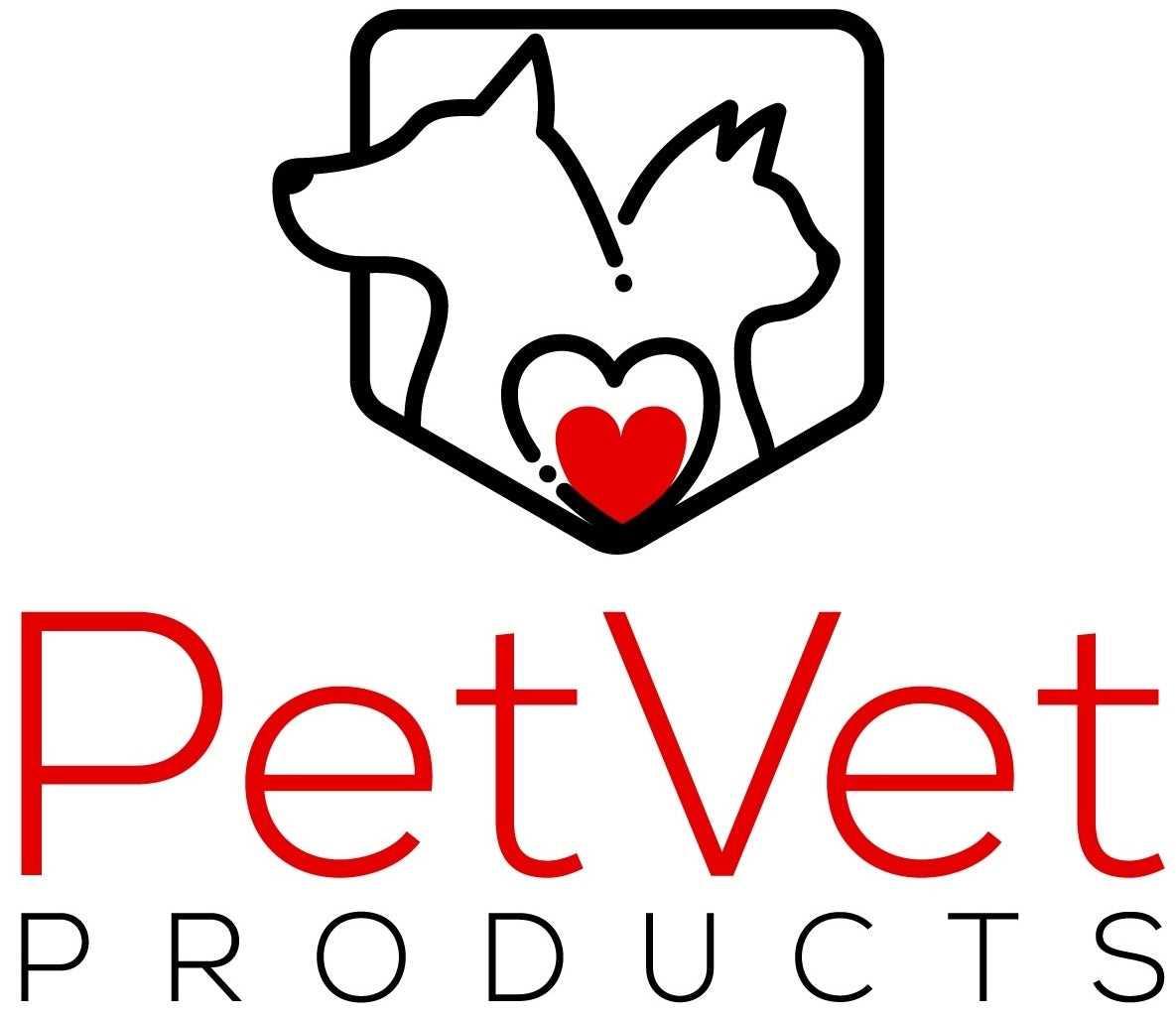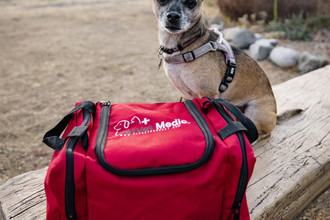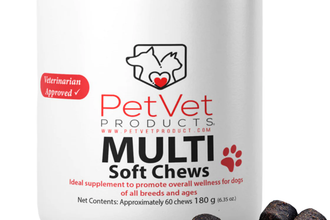
When it comes to your pet’s health, being prepared can make all the difference. At Pet Vet Products, we know how quickly unexpected situations can arise—from a cut paw on a morning walk to a sudden allergic reaction at home. That’s why we believe every pet owner should have a trusted first aid kit for pets on hand.
Led by Dr. Leah Hill, who brings over 25 years of veterinary experience to our team, we offer reliable pet care products designed to give you peace of mind when your furry friend needs help the most. We aim to help you feel confident and ready, no matter the situation.
In this blog, we’ll discuss the essential items every pet parent should have in their pet’s first aid kit and why each one matters in keeping your pet safe and cared for.
Why Does Every Pet Need a First Aid Kit?
Emergencies don’t always happen at the vet clinic. Having the right supplies on hand can make all the difference, whether it’s a scraped paw during a hike, a sudden allergic reaction, or a high fever at midnight. A proper first aid kit pet bridges the gap between noticing a problem and getting professional care. It gives you peace of mind and can be the first step in preventing further injury or discomfort.
The good news? Assembling a reliable kit doesn’t have to be complicated or expensive. You just need the right tools and a basic understanding of how to use them.
1. Tweezers: Small but Mighty
It might seem simple, but tweezers are an essential tool in any pet emergency kit. From removing ticks to extracting splinters, they allow you to handle small objects with care. Choose a pair with a pointed tip to help with precision tasks. If your pet gets into outdoor trouble, you’ll be glad to have them handy.
2. Thermometer: Monitor Their Temperature

Unlike humans, pets can’t tell you when they have a fever. A digital rectal thermometer is the most accurate way to measure your dog or cat's temperature. Keep in mind that a normal dog’s temperature is between 38.3°C and 39.2°C. Anything significantly higher or lower should prompt a call to the vet.
Keeping a thermometer in your first aid kit for pets ensures you're not guessing during those crucial moments.
3. Antibiotic Ointment: For Cuts and Scrapes
Minor wounds happen more often than we’d like. A dab of antibiotic ointment can prevent infections and speed up healing. Look for an ointment specifically labeled safe for pets. Apply it only after cleaning the wound and avoid using products meant solely for humans.
Remember, the aim is not just to treat but to soothe and protect.
4. Bandages and Tape: Protect the Wound

After cleaning a wound, it's important to cover it properly. Keep rolls of self-adhesive bandage wrap in your kit. These wraps are flexible and stick to themselves without pulling your pet’s fur. Medical tape is also handy to secure gauze pads or cotton balls in place.
Pairing these with gloves helps you handle the situation hygienically, keeping you and your pet safe.
5. Saline Solution: Clean and Clear
Saline solution is ideal for rinsing out your pet’s eyes or flushing dirt from a wound. It's gentle, safe, and effective. Whether it’s sand in your dog’s eye after a beach trip or debris in a paw pad, having saline on hand allows you to act quickly and with confidence.
6. Scissors with Blunt Ends: Safe and Sharp
Not all scissors are created equal. Blunt-ended scissors allow you to trim fur around a wound without accidentally poking or cutting your pet’s skin. They also come in handy when removing tangled bandages or cutting tape.
This is a simple yet often overlooked part of any reliable pet care supplies collection.
7. Syringes: Administer with Care
Syringes without needles are perfect for administering oral medications or flushing wounds. They also help if you need to give water or electrolytes to a sick pet. Syringes allow for precise dosing and are gentle on the mouth and gums.
Every Dog first aid handbook would recommend having at least one or two clean syringes available at all times.
8. Medical Gloves and Cotton Balls: Keep It Clean
When handling injuries, cleanliness is critical. Medical gloves protect both you and your pet from infection. Cotton balls are great for applying antiseptics or cleaning small wounds. Keep a small stash in a resealable bag to maintain hygiene.
You’ll feel better knowing you’re prepared to care for your pet safely and properly.
9. Muzzle: For Everyone’s Safety
Even the gentlest pet can bite when they’re scared or in pain. A soft muzzle can help prevent accidental injuries during first aid. It's not about punishment—it’s about safety for both you and your animal.
Be sure to practice putting the muzzle on your pet ahead of time so it's not a new and scary experience in a stressful moment.
10. Antiseptics, Benadryl, and an Ice Pack: Ready for the Unexpected
Having pet-safe antiseptic wipes or solution helps clean wounds and reduce bacteria. Benadryl (diphenhydramine) is commonly used for allergic reactions, but you should always consult your vet for proper dosing. An ice pack can help reduce swelling, pain, or overheating, especially after a long walk in the sun.
Combined, these items can make the early moments after an injury or illness far less overwhelming.
Don’t Forget a First Aid Guide
When an emergency happens, it’s easy to panic. That’s why a reliable Dog first aid handbook or printed pet first aid guide is a must-have in your kit. It provides step-by-step instructions on how to handle common issues like cuts, choking, heatstroke, and more.
Even experienced pet owners can benefit from having quick, trusted guidance at their fingertips.
Multivitamins and Preventative Care

While not strictly a first-aid item, including a multivitamin for dogs in your pet care regimen is a great preventative step. Healthy pets are better equipped to recover from illness or injury. Multivitamins help boost their immune system, maintain energy, and support overall health.
If your dog’s diet lacks certain nutrients or they’re recovering from illness, these supplements can be a real help. Be sure to choose a formula designed specifically for your pet’s age, size, and breed.
Replenish and Review Regularly
Once you’ve assembled your first aid kit for pets, don’t just tuck it away and forget about it. Check the contents every few months. Replace expired medications, replenish supplies you’ve used, and ensure everything is clean and ready to use.
As your pet ages or if you adopt a new animal, their needs might change. Keep your kit up to date to reflect that.
Keep One at Home and One in the Car
Emergencies don’t stick to a schedule. That’s why many pet owners keep two kits—one at home and one in the car. If you’re someone who enjoys road trips, hikes, or beach days with your furry friend, having pet care essentials on the go is incredibly important.
A small bag with the basics can be just as useful as a larger home kit.
Conclusion: A Small Effort That Makes a Big Difference
Preparing a first aid kit for a pet isn’t about fearing the worst—it’s about feeling confident and ready. Pets can’t always tell us when something’s wrong, but they rely on us to notice, act fast, and offer comfort. The tools listed above are not only practical but essential for any pet parent who wants to provide thoughtful, loving care.
At Pet Vet Products, we take pet wellness seriously. Led by Dr. Leah Hill, our team has the experience and dedication to give pet parents the tools they need to protect their furry family members. Our curated kits and expert-approved supplies are designed to keep your pet safe in any situation.
Ready to Build Your First Aid Kit?
Browse our full collection of expertly chosen pet care supplies today. Whether you're looking for a complete kit, a multivitamin for dogs, or a trusted Dog first aid handbook, Pet Vet Products has everything you need to care for your pets with confidence.
Visit us now and make sure you’re always ready for the unexpected.










